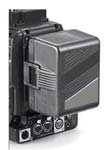Lithium Batteries Restricted on US Flights
 Passengers will no longer be able to pack loose lithium batteries in checked luggage on flights in the USA, effective from January 1st 2008. The new regulation is designed to reduce the risk of lithium battery fires and applies to all flights from, to and within the USA. Lithium batteries are considered hazardous materials because they can overheat and ignite in certain conditions. Lithium batteries in checked baggage are allowed if they are installed in electronic devices, or in carry-on baggage if stored in plastic bags (maximum of two extended-life batteries).
Passengers will no longer be able to pack loose lithium batteries in checked luggage on flights in the USA, effective from January 1st 2008. The new regulation is designed to reduce the risk of lithium battery fires and applies to all flights from, to and within the USA. Lithium batteries are considered hazardous materials because they can overheat and ignite in certain conditions. Lithium batteries in checked baggage are allowed if they are installed in electronic devices, or in carry-on baggage if stored in plastic bags (maximum of two extended-life batteries).
US Department of Transportation
New US DOT Hazmat Safety Rule to Place Lithium Battery Limits in Carry-on Baggage on Passenger Aircraft Effective January 1, 2008
Passengers will no longer be able to pack loose lithium batteries in checked luggage beginning January 1, 2008 once new federal safety rules take effect. The new regulation, designed to reduce the risk of lithium battery fires, will continue to allow lithium batteries in checked baggage if they are installed in electronic devices, or in carry-on baggage if stored in plastic bags.
Common consumer electronics such as travel cameras, cell phones, and most laptop computers are still allowed in carry-on and checked luggage. However, the rule limits individuals to bringing only two extended-life spare rechargeable lithium batteries, such as laptop and professional audio/video/camera equipment lithium batteries in carry-on baggage.
“Doing something as simple as keeping a spare battery in its original retail packaging or a plastic zip-lock bag will prevent unintentional short-circuiting and fires,” said Krista Edwards, Deputy Administrator of the U.S. Department of Transportation’s Pipeline and Hazardous Materials Safety Administration.
Lithium batteries are considered hazardous materials because they can overheat and ignite in certain conditions. Safety testing conducted by the FAA found that current aircraft cargo fire suppression system would not be capable of suppressing a fire if a shipment of non-rechargeable lithium batteries were ignited in flight.
“This rule protects the passenger,” said Lynne Osmus, Federal Aviation Administration (FAA) assistant administrator for security and hazardous materials. “It’s one more step for safety. It’s the right thing to do and the right time to do it.”
In addition to the new rule, PHMSA is working with the FAA, the National Transportation Safety Board, the Consumer Product Safety Commission, the battery and airline industries, airline employee organizations, testing laboratories, and the emergency response communities to increase public awareness about battery-related risks and developments. These useful safety tips are highlighted at the public website: http://safetravel.dot.gov
Effective January 1, 2008, the following rules apply to the spare lithium batteries you carry with you in case the battery in a device runs low:
* Spare batteries are the batteries you carry separately from the devices they power. When batteries are installed in a device, they are not considered spare batteries.
* You may not pack a spare lithium battery in your checked baggage
* You may bring spare lithium batteries with you in carry-on baggage – see our spare battery tips and how-to sections to find out how to pack spare batteries safely!
* Even though we recommend carrying your devices with you in carry-on baggage as well, if you must bring one in checked baggage, you may check it with the batteries installed.
The following quantity limits apply to both your spare and installed batteries. The limits are expressed in grams of “equivalent lithium content.” 8 grams of equivalent lithium content is approximately 100 watt-hours. 25 grams is approximately 300 watt-hours:
* Under the new rules, you can bring batteries with up to 8-gram equivalent lithium content. All lithium ion batteries in cell phones are below 8 gram equivalent lithium content. Nearly all laptop computers also are below this quantity threshold.
* You can also bring up to two spare batteries with an aggregate equivalent lithium content of up to 25 grams, in addition to any batteries that fall below the 8-gram threshold. Examples of two types of lithium ion batteries with equivalent lithium content over 8 grams but below 25 are shown below.
* For a lithium metal battery, whether installed in a device or carried as a spare, the limit on lithium content is 2 grams of lithium metal per battery.
* Almost all consumer-type lithium metal batteries are below 2 grams of lithium metal. But if you are unsure, contact the manufacturer!

Loading comments…